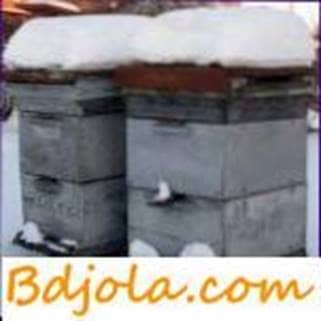
Some beekeepers believe that the most serious shortcoming of multi-hull bees is the frequent deaths of bees during their wintering at will, as the deceased families have a typical pattern of feeding with a honeycomb filled upper body. The presence in the nest of a small number of broods is usually not taken into account, namely brood and is the cause of the death of the family. Bees will never leave it if, due to insufficient strength of the family, the club can not seize the honeycombs of the stern hull.
The reference to the structural and technological shortcomings of the multi-hull is in this case, in my opinion, groundless – the club of a strong family easily overcomes the sub-frame space and the bars of the frames of neighboring buildings.
The death of bees in our locality can occur either at the end of autumn (November) or at the end of winter (February), and in both cases it is associated with brood. Its appearance in the first case is facilitated by the late arrival of bees of nectar and pollen, prolonged feeding (if it is given in small portions), young uterus of late withdrawal, re-heating of the nest, high temperatures, sharply decreasing. Secondly, winter thaws and heating of hives, anxiety of bees by mice, mites, rodents, etc.
Works that ensure a safe wintering start in May, when in conditions of the edge it is possible to remove the queens and harvest white-oak and sainfoil honey, which are most suitable for wintering. Six to eight dark sealed frames fully cover the needs of one strong family. In order for the bees to seal cell cells, the size of the nest should be optimal. Otherwise, when removing food frames from the nest, Caucasian bees carry honey closer to the brood, and full honeycombs with unsealed esparce honey transferred to the upper body may later be half empty.
It is much more difficult to keep frames with food until the autumn collection of nests. If the apiary is stationary, then the aft body with sealed honeycombs is easier to transfer upward. On the nomad apiary, they should be transported to a soviet storage facility or placed in hermetic boxes, and treated with wax moths.
We receive the last commodity honey from sunflower. When the supply of nectar in the hive is reduced to 400-500 g, honey is completely pumped out (honey from sunflower quickly crystallizes and for wintering is unsuitable). However, the framework, where there is a brood of all ages, I leave. The feed from them will be used to build up bees in the winter. I concentrate the frames with the brood below, I reduce the number of cases to two, so that all honeycombs densely surround the bees. In this case, they seal honey more quickly, and in the lower housing favorable conditions are created for the release of the brood.
Cells of the lower body are gradually released from the brood. By the end of August, the brood portion of the nest is formed in the second housing. If he is fully engaged in brood during August, it will allow to build strong families in winter.
If immediately after the honey collection from the sunflower I put the second shell, filled with mediocre honeycombs, then in the center I leave two honeycombs with a small amount of honey (1-1.5 kg). On them the uterus will pass later, and here the last brood in this season will be concentrated. After removing the brood, after removing the brood and finally forming the nest in the winter, I marked this frame.
You should not spend unnecessarily autumn, especially the September, stimulating top dressing. The best way to build up the strength of the family at this time is the age-old uterus, abundant food and natural supporting bribes. Finally, I form nests in the first decade of October.
The bees hibernate, as a rule, in two buildings. In the lower and upper left eight frames. Honeycomb honeycombs do not contain honey at all. In the center of the upper body I leave two frames, the lower part of which is not filled with honey for 5-8 cm. During the spring flight of the bees, if necessary, I replenish the stocks of food. If it is enough, and the family after wintering occupies only the upper case, then I remove the lower one, and I give the honey frames from the reserve at the first expansion of the nest.
Лечение пчелиными укусами. Как подкармливать пчел на зиму.
Hibernation of bees